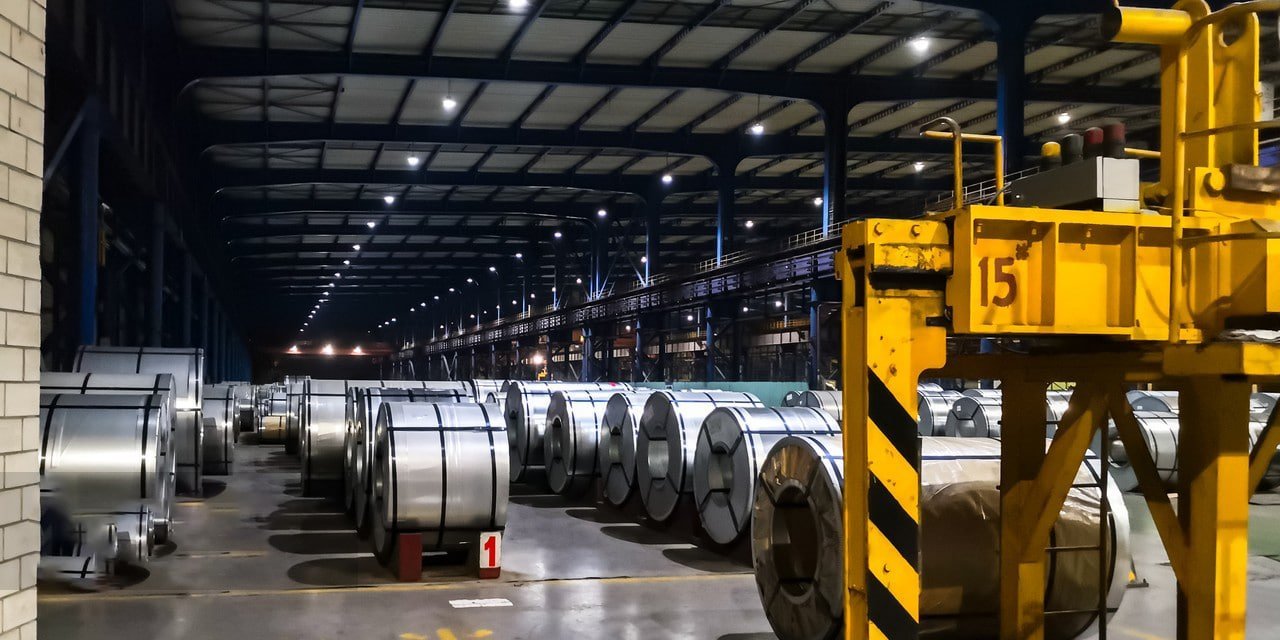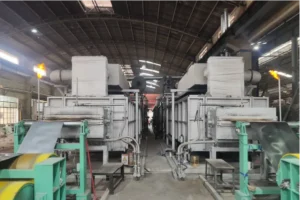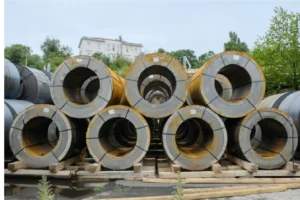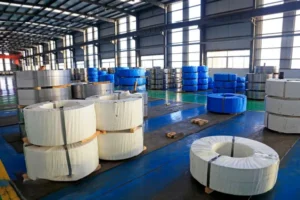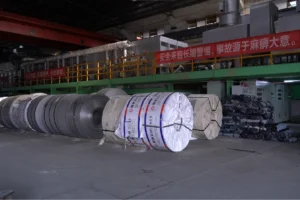What Does 'Hot-Rolled Stainless Steel Coil' Mean?

In my 15 years of stainless steel manufacturing experience, I've seen hot rolling1 serve as the fundamental process that transforms raw material into usable stainless steel coil. It's the crucial first step in steel production.
Hot-rolled stainless steel coil2 is produced by rolling steel at temperatures above 1800°F (1000°C), where the metal is more malleable, allowing for significant thickness reduction and shaping while requiring less force than cold rolling.
Through my experience managing hot rolling operations, I've overseen the production of countless tons of stainless steel coil. Let me share insights about this essential process that forms the backbone of stainless steel manufacturing.
The importance of hot rolling in stainless steel production cannot be overstated. From my daily interactions with production teams and customers, I've learned how this process sets the foundation for all subsequent processing steps.
What Is Hot Rolling and How Is It Applied to Stainless Steel?
Having supervised hot rolling operations for many years, I can explain the intricacies of this fundamental process.
Hot rolling involves heating stainless steel slabs to temperatures above 1800°F, then passing them through a series of rollers to reduce thickness while improving structure and properties.

Process Parameters
| Parameter | Typical Range | Impact |
|---|---|---|
| Temperature | 1800-2200°F3 | Formability |
| Reduction per Pass | 20-50% | Thickness control |
| Rolling Speed | 50-300 m/min | Surface quality |
| Final Thickness | 2-10mm | Product specs |
Key Process Steps
-
Material Preparation:
- Slab reheating
- Scale removal
- Temperature monitoring
- Edge conditioning
- Surface inspection
-
Rolling Operation:
- Multiple pass reduction
- Temperature control
- Width control
- Thickness monitoring
- Cooling control
How Does Hot-Rolled Stainless Steel Coil4 Differ from Cold-Rolled Stainless Steel Coil?
Through years of producing both types, I've observed their distinct characteristics and applications.
Hot-rolled stainless steel coil typically has a rougher surface finish and looser tolerances than cold-rolled, but offers better formability and lower production costs.

Comparative Analysis
| Characteristic | Hot-Rolled | Cold-Rolled |
|---|---|---|
| Surface Finish | Mill Scale | Smooth/Bright |
| Dimensional Tolerance | ±0.5mm | ±0.1mm |
| Production Cost | Lower | Higher |
| Formability | Excellent | Good |
| Internal Stress | Lower | Higher |
Key Differences
-
Physical Properties:
- Rougher surface texture
- Wider thickness tolerance
- Less internal stress
- Better grain structure
- More uniform properties
-
Processing Characteristics:
- Lower production cost
- Simpler processing
- Better hot formability
- Easier welding
- More economical
What Are the Key Properties of Hot-Rolled Stainless Steel Coil?
My experience with quality control has taught me the essential characteristics of hot-rolled material.
Hot-rolled stainless steel coil features5 excellent formability, uniform mechanical properties, and minimal internal stresses, making it ideal for applications where surface finish is not critical.

Material Properties
-
Mechanical Characteristics:
- Good tensile strength
- Uniform properties
- Excellent ductility
- Low internal stress
- Consistent structure
-
Physical Attributes:
- Mill scale surface
- Standard tolerances
- Good flatness
- Uniform grain size
- Predictable behavior
Performance Standards
| Property | Typical Value | Industry Standard |
|---|---|---|
| Tensile Strength | 515-720 MPa | ASTM A240 |
| Yield Strength | 205-410 MPa | EN 10088-2 |
| Elongation | 40-60% | JIS G4304 |
| Surface Roughness | 2-6μm | ASTM A480 |
What Are the Common Applications of Hot-Rolled Stainless Steel Coil?
Through working with various industries, I've seen hot-rolled material succeed in many applications.
Hot-rolled stainless steel coil is commonly used6 in construction, heavy equipment, industrial tanks, and structural applications where surface finish is secondary to strength and formability.

Industry Applications
-
Construction:
- Structural components
- Support beams
- Building frameworks
- Industrial flooring
- Heavy equipment parts
-
Industrial Equipment:
- Storage tanks
- Pressure vessels
- Heat exchangers
- Processing equipment
- Industrial piping
-
Transportation:
- Truck frames
- Railway cars
- Ship building
- Container manufacturing
- Heavy vehicle parts
Application Benefits
Based on field experience:
- 30% cost savings vs. cold-rolled
- Better forming capabilities
- Reduced processing time
- Lower material costs
- Improved weldability
What Are the Advantages of Using Hot-Rolled Stainless Steel Coil in Manufacturing?
My manufacturing experience has shown numerous benefits of using hot-rolled material.
Hot-rolled stainless steel coil offers7 manufacturing advantages through lower cost, better formability, reduced internal stresses, and simpler processing requirements.

Manufacturing Benefits
-
Processing Advantages:
- Lower production costs
- Simpler forming operations
- Better weldability
- Less spring back
- Easier machining
-
Economic Benefits:
- Reduced material cost
- Lower processing costs
- Faster production
- Less equipment wear
- Higher throughput
Cost-Benefit Analysis
| Factor | Impact | Benefit |
|---|---|---|
| Material Cost | -25% | Lower product cost |
| Processing Time | -20% | Higher productivity |
| Equipment Wear | -15% | Reduced maintenance |
| Energy Usage | -30% | Cost savings |
Conclusion
Through my years in stainless steel manufacturing, I've seen hot-rolled stainless steel coil provide an economical and efficient solution for many applications, particularly where surface finish is not critical and cost-effectiveness is paramount.
-
Learn the fundamental process of hot rolling in steel manufacturing ↩
-
Understand the production process of hot-rolled stainless steel coil ↩
-
Discover the ideal temperature range for hot rolling ↩
-
Compare properties of hot-rolled vs. cold-rolled steel ↩
-
Explore essential characteristics of hot-rolled stainless steel ↩
-
Find out typical uses for hot-rolled stainless steel ↩
-
Learn the benefits of using hot-rolled steel in production ↩
Have Questions or Need More Information?
Get in touch with us for personalized assistance and expert advice.
